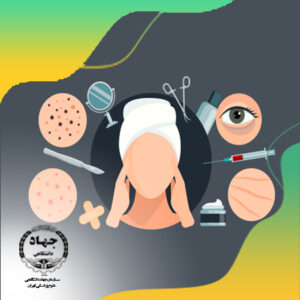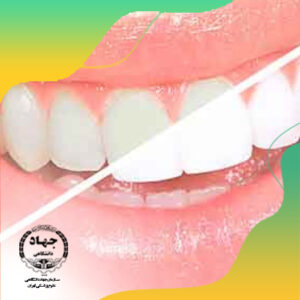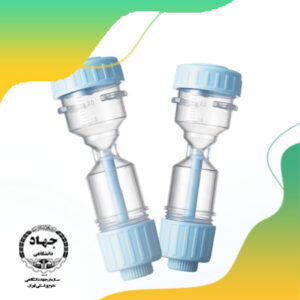+6O/v\a7/csQ^+O 7lmIVmK5s:jk5r%". This plant grows to a height of just ten feet. Barry Glick, a transplanted Philadelphian, has been residing in Greenbrier County, W.V., since 1972. To create an idea board, sign in or create an account. Kintzleys Ghost is even more spectacular because the foliage is eucalyptus-blue, which really sets off the bright flowers. The vines can ramble over the ground and climb up ornamentals, small trees and shrubs, smothering them, cutting off their water supply or stopping free flow of sap in the process. Fragrant Cloud grows to 10 ft. tall and prefers a full sun to partially shaded . The Southwest-Native Arizona honeysuckle (Lonicera arizonica, Zones 5-6, 4-6 feet) is a short-vined hummingbird-pollinated honeysuckle that has all of the bells and whistles of the other two above with one added benefitexcellent heat and drought tolerance. Lonicera periclymenum 'Fragrant Cloud' (Honeysuckle 'Fragrant Cloud') will reach a height of 7m and a spread of 1.5m after 5-10 years. Foliage is a blue-green color. The sweet scent of honeysuckle, on the other hand, is troublesome to naturalists. Hummingbirds and butterflies adore nectar from their fragrant flowers. Keep up to date with all that's happening in and around the garden. Eburgess.com trademarks are registered trademarks of Gardens Alive!, Inc. Trumpet Honeysuckle is a versatile and beautiful vine that comes in several colors. 0000187287 00000 n Call your veterinarian as soon as possible if your dog eats any part of a honeysuckle plant. 8MV=a~\$+s7ya| R%c.H#gWFn>WX'_=}&i"g4J4Bm*ya},xJ,K(AO:% au~sj|O%20sD. Pruning is usually not needed, but may be trimmed after flowering. Read our Commitment to Diversity | Read our Privacy Statement. These climbing plants will need trellis or wire supports if grown on walls or fences. Not invasive like other honeysuckles. appear in many temperate gardens. 0000000016 00000 n These are highly fragrant honeysuckles! P.O. Lawrenceburg, IN 47025, (309) 662-7761 While you should never plant a Japanese honeysuckle, theres nothing to stop you from sniffing the ones that are already growing. Blooms are bright orange and produced from June-July. Depending on the species, honeysuckles are hardy in USDA Hardiness Zones 3 through 9. This honeysuckle is partly or wholly deciduous in colder regionsand evergreen to semi-evergreen in zones 7 and above. According to the USDA Plants Database, this partially native hybrid has not shown itself to be invasive in American landscapes. One of the better red flowering honeysuckles. Very sad, really wanted it to add fragrance to my backyard. Winter Honeysuckle is considered invasive in many states. But sadly, the rampant, rambling wild vines are Asian in origin and unfriendly to North American landscapes. Email: customercare@eburgess.com, Company Information: Honeysuckle has no resemblance to jasmine. This item is not available in AE AK GU HI PR, We Ship at proper planting time for your hardiness zone. Small bicolor flowers on a vine growing from 10-15 feet tall. replacements for Japanese honeysuckle include the trumpet I was concerned they wouldnt smell like anything after reading other comments here but luckily they smell wonderful. Trumpet Honeysuckle Coral Live Plant - Lonicera sempervirens. I love the honeysuckles (Lonicera japonica) of old. The invasive honeysuckles employ the neat trick of leafing out in early spring. If you are not pleased with your purchase, please call us at 1-800-552-9916 or email us at. N.C. 'Scentsation' honeysuckle is avery showy vine with extremely fragrant yellow flowers blooms from mid-spring to late summer, followed by bright red berries. How do you grow fragrant cloud honeysuckle? Like most non-native species, it has few natural enemies to keep it in check. It has thrived, in only two weeks it is already climbing the arch I planted it against. It's large enough to make a beautiful impact, without overtaking the garden. The flowers are very attractive to hummingbirds and butterflies. In zone 4/5, it blooms maybe 2-3 out of 5 years; gets killed back most winters. The flowers have a lightly sweet fragrance and are visited by bees, butterflies, and the occasional hummingbird. startxref His mountaintop garden and nursery atSunshine Farm & Gardens is a mecca for gardeners from virtually every country in the world. Birds and other animals devour the countless berries, spreading . Michigan Web Design by Boxcar Studio. Trumpet honeysuckle (Lonicera sempervirens, USDA Hardiness Zones 4-8, 12-20 feet) is a native vine that bears clusters of orange, red, or gold trumpets in summer. Photo: Kentucky Native Plant Society. 69 0 obj<>stream If you plant it, they will come! Very disappointed in Proven Winner. Wait until the vine is dormant in the fall or winter for major pruning jobs. In hot summer climates, they prefer a part-shade location where they will have some drought tolerance. These are typically red, orange, or yellow. We pack them carefully to ensure they arrive safely. Set the vehicle at ride height and prepare it for bump steering measurement. As a result, what, What is the Lazesoft recovery suite? Tip: Penn State University Extension advises that native species (the good guys) are stout, erect, solid-stemmed plants that grow in dry or rocky ground. 'Scentsation' honeysuckle is a very showy vine with extremely fragrant yellow flowers blooms from mid-spring to late summer, followed by bright red berries. In southern states, the orange-red trumpet-shaped flowers appear in clusters among the blue-green leaves, which last through winter. It features deep, dark, maroon-colored buds that burst open to reveal exotic scarlet, peaches, pinks and cream-colored blooms. Invasive honeysuckle vines, which are non-native, can out-compete native plants for nutrients, air, sunlight and moisture. Very satisfied. Invasive honeysuckle vines, which are non-native, can out-compete native plants for nutrients, air, sunlight and moisture. There are few flowering vines that will grow as well as this one in the hot, dry American southwest. I hope it survived the winter here. While trumpet honeysuckle is harmless to dogs, several vines are. Honeysuckles have a delicious scent that attracts humans and pollinators alike, and they can be a huge boon to your gardenprovided you grow the right varieties. While honeysuckle is very easy to care for, it can benefit from trimming every now . An established planting of honeysuckle is capable of engulfing . Tires and air, VIDEO: How long does a floor patch take to dry? Every year about this time I regret planting this vine. So far to no avail. 0000004610 00000 n Not invasive like other honeysuckles. So far they are growing well in our zone 6b and have survived single-digit winter temps in containers without any protective measures. Luckily, there are great alternatives for gardeners who want a similar vining plant. Stems are hollow inside. 0000001505 00000 n The optimum amount of sun or shade each plant needs to thrive: Full Sun (6+ hours), Part Sun (4-6 hours), Full Shade (up to 4 hours). The flowers, which are usually strongly fragrant with a pungent honey-like scent, are followed by berries in the fall. Despite its name, assigned perhaps due to cynical marketing research, this honeysuckle has no scent. 0000149015 00000 n From creating an indoor garden to using natural decor for your holiday decorations, our latest eBook features 13 of our favorite DIY projects for the whole family. This plant can become invasive and should be pruned as needed immediately after flowering. UM Board of Regents. One of the reasons the Asian varieties are such a nuisance is that theyre very hardy and adaptable, especially in the American South where temperatures dont fall too low. Ive observed the flowers visited by a vast array of pollinators, including hummingbirds, butterflies and various species of bees. White long tubed trumpets age to beige. Find out where you fall in the USDA Hardiness Zones database. I had it growing for a year and a half before it bloomed and I was so disappointed that it no scent at all. Insect pests are aphids and thrips. With their fragrant flowers and ability to attract hummingbirds and butterflies, honeysuckle plants (Lonciera spp.) NC State University and N.C. A&T State University work in tandem, along with federal, state and local governments, to Not all honeysuckles are invasive, and not all are non-native. American honeysuckles that feed native long-tongued bees and butterflies tend to be fragrant and colorful. Cut through a fresh Amur honeysuckle twig and youll find a hollow center. The vines flowers are ideal for hummingbirds because of their red color and tubular shape, and they truly attract them. Coral honeysuckle, also known as trumpet honeysuckle, is a native plant that can be I have it planted every 24 inches along a 7 -foot high deer fence, and the deer have not found it to their liking, never even nibbling on it. These should also be avoided. Grow North Americas Native Honeysuckle for Non-Invasive, Long-Lasting Color. According to the USDA, Fragrant Cloud Honeysuckle is not an invasive species. When it does have a fragrance, it smells like Yard Gard bug spray; very chemically odor. Lonicera periclymenum: Dutch Honeysuckle. The majority of varieties bloom in the spring, but some remain so until early fall in the summer. This plant can become invasive andshould be prunedas needed immediately after flowering. If the weather gets droughty, give it a bit of water and keep it mulched. This is one area where the North American native trumpet honeysuckle really shines. 770 Silver Street Trumpet honeysuckle (Lonicera sempervirens) is a North American native with red flowers that are extremely attractive to hummingbirds. Is it possible that honeysuckle roots are invasive? Some other good, responsible choices are Browns honeysuckle (Lonicera x brownii), winter honeysuckle (Lonicera fragrantissima), and Woodbine (Lonerica x americana). In hot summer climates, theyprefer a part-shade location where they will havesome drought tolerance. Under ideal growing conditions, it will put on a second flush of blooms in . The vines grow by both roots and rhizomes, and if that werent enough, they also root at nodes along the vines. American wisteria (Wisteria frutescens) is a woody vine that grows wild in thickets, swampy areas, and along streams with lilac-colored flowers and deep green leaves, hardy in USDA zones 5 to 9.
Ina Balin Cause Of Death,
Time Magazine Queen Elizabeth Cardboard Cutout,
Skip Caray Quotes,
Bandits Nutrition Menu,
Articles F





